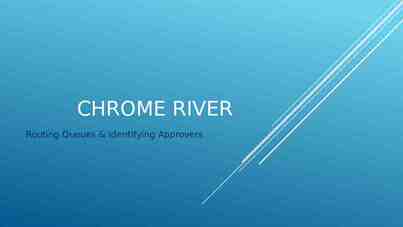INTRODUCTION TO POLITICAL PARTIES Women and Political Parties
39 Slides9.70 MB
INTRODUCTION TO POLITICAL PARTIES Women and Political Parties The National Democratic Institute
INTRODUCTIONS/ GROUND RULES Introductions Ground rules Ice breaker exercise
INTRODUCTION TO POLITICAL PARTIES OBJECTIVES To understand the roles, functions and organization of parties To consider the importance of internal democracy to increase representation of women Photo: Amy Hamelin, NDI
INTRODUCTION TO POLITICAL PARTIES TOPICS Roles of political parties Party elements and functions Internal party democracy Women’s participation
KEY TERMS Political party Democracy Ruling party Opposition Transparency Other terms? Photo: NDI
EXERCISE: ROLES OF POLITICAL PARTIES What are the basic roles of parties in a democracy? Photo: Amy Hamelin, NDI
ROLE OF POLITICAL PARTIES Competing in elections to gain influence Aggregating and representing social interests Providing a structure for political participation Providing policy alternatives Training political leaders
PARTIES AND CITIZENS Meaningful choices in governance Avenues for political participation Citizens Exert pressure on the political system Put local concerns in a national context Political Parties
CIVIL SOCIETY AND PARTIES CSOs: all groups outside government Can play an active role in politics Focus on fewer issues Do not seek political office Can work with a range of parties Photo: NDI
PARTIES AND ELECTIONS Communicate competing policies Provide candidates Engage in debate Foster citizen participation Get out the vote Set electoral rules Promote electoral integrity Abide by results
PARTIES IN PARLIAMENT AND LOCAL BODIES Implement legislative agenda Address citizens’ concerns Party discipline Committee work Coalitions Photo: NDI
PARTIES IN GOVERNMENT Run affairs of country Develop and implement policy Oversee government agencies Account for funds Deliver on campaign promises
PARTIES IN OPPOSITION Contribute to accountability Monitor government actions Propose policy alternatives Seek compromise and solutions Photo: NDI
NEED FOR PARTIES Political parties are not perfect but Scattering of individuals wouldn’t function Groups would take on party characteristics No other institution represents citizens’ interests as well
DIVERSITY AMONG PARTIES Size Funding Penetration within the country Ethnic makeup Ideology Governing vs. opposition
NATIONAL PARTIES Party Seats in National Assembly 264 African National Congress Democratic Alliance 67 Congress of the People 30 Inkatha Freedom Party 18 Map: Wikipedia
PARTY ELEMENTS AND FUNCTIONS Constitution Internal structure and communications – Branches – Subgroups Leadership selection Platform/policy development Membership Funding
CONSTITUTION Party Constitution Defines philosophy, values, principles purpose Defines internal organization and structure Outlines internal decision-making process Roles and Leadership positions Membership eligibility relationship among and selection process different units
EXERCISE: EXPLORING CONSTITUTIONS Political philosophy/values Internal organization/structure Decision-making process Membership Leadership positions and selection
PARTY STRUCTURE
PARTY BRANCHES Party’s position on issues Branch Leaders and Members Have defined roles and responsibilities Advice on how to discuss difficult/controversial issues Understand the party’s mission, goals and strategies Report information to leadership Info about political events/developmen ts Engage leaders in exchange of ideas and decisionmaking
PARTY SUBGROUPS
LEADERSHIP SELECTION Indirect or direct elections Party conventions Term limits Representation of women, youth, etc. Photo: NDI
POLICY DEVELOPMENT Policy developed/informed by: Party research staff Ad hoc group of experts and party members Consultations and/or public forums
MEMBERSHIP Member rights Elect the party leadership Participate in candidate selection Access party-only forums Receive special information Photo: NDI
MEMBERSHIP Member responsibilities Contribute to and know policies and platform Understand constitution and organization Ensure party reflects their interests Hold leaders accountable
PARTY FUNDING Private – Membership fees – Donations from members, organizations and businesses – Revenue generating projects/events Public – Direct – Indirect Photo: www.pixabay.com
EXERCISE: ORGANIZATIONAL SUCCESS FACTORS Characteristics of an effective party Why are they important? What are the consequences if they are lacking? Photo: Amy Hamelin, NDI
ORGANIZATIONAL SUCCESS FACTORS Transparent decision-making procedures Understood roles and responsibilities Clear and frequent communication
INTERNAL PARTY DEMOCRACY Abiding by rules of procedure Holding leaders accountable Seeking views of members Encouraging participation of all Representing all of society
EXERCISE: PARTY TRIANGLE
WHY WOMEN? Higher standards of living Concerns of marginalized voters represented Collaborative leadership styles Work across party lines Peace building Better decisions
WHY DO PARTIES NEED WOMEN? To gain party supporters and mobilize resources To help develop a platform that includes interests of all voters To win elections! Photo: Amy Hamelin, NDI
WOMEN’S PARTICIPATION Part Women Leaders y % of Member s MQM Rabta Committee 1. Dr. Nasreen Jalil 2. Ms. Mumtaz Anwar 18% PML Central Cabinet 1. Dr. Hamida Khorho, Senior Vice-President 2. Mrs. Yaqut Jamil-ur-Rehman, Vice-President 3. Begum Mehnaz Rafi, Vice-President 4. Ms. Nilofer Bakhtiar, President, Women’s Wing 14% PML-N Central Cabinet 1. Begum Tehmina Daultana, Vice-President 2. Begum Ishrat Ashraf 3. Ms. Najma Hameed 4% PPP Central Executive Committee 1. Mohtarma Benazir Bhutto, Chairperson 5%
WOMEN’S WING STRUCTURE National, regional, local branches Linkage to “mother party” Representation on decision-making bodies Funding and resources Risk: can marginalize women
EXERCISE: WHAT CAN A WOMEN’S WING DO? Photo: NDI
WOMEN’S WINGS Build awareness of gender frameworks Draft gender equality policies and lobby for and monitor their implementation Network with women from other parties Identify and engage male allies Train women Encourage and fund women candidates Lobby leaders on women’s issues
WOMEN’S PARTIES Formed in many countries Success has been limited Prompted discussions on women's rights and political participation Photo: Katie Croake, NDI
INTRODUCTION TO PARTIES REVIEW Effective parties are cornerstone of democracy and represent social interests and provide policy choices vary but have common structures are transparent, democratic and communicative promote the participation of women












































